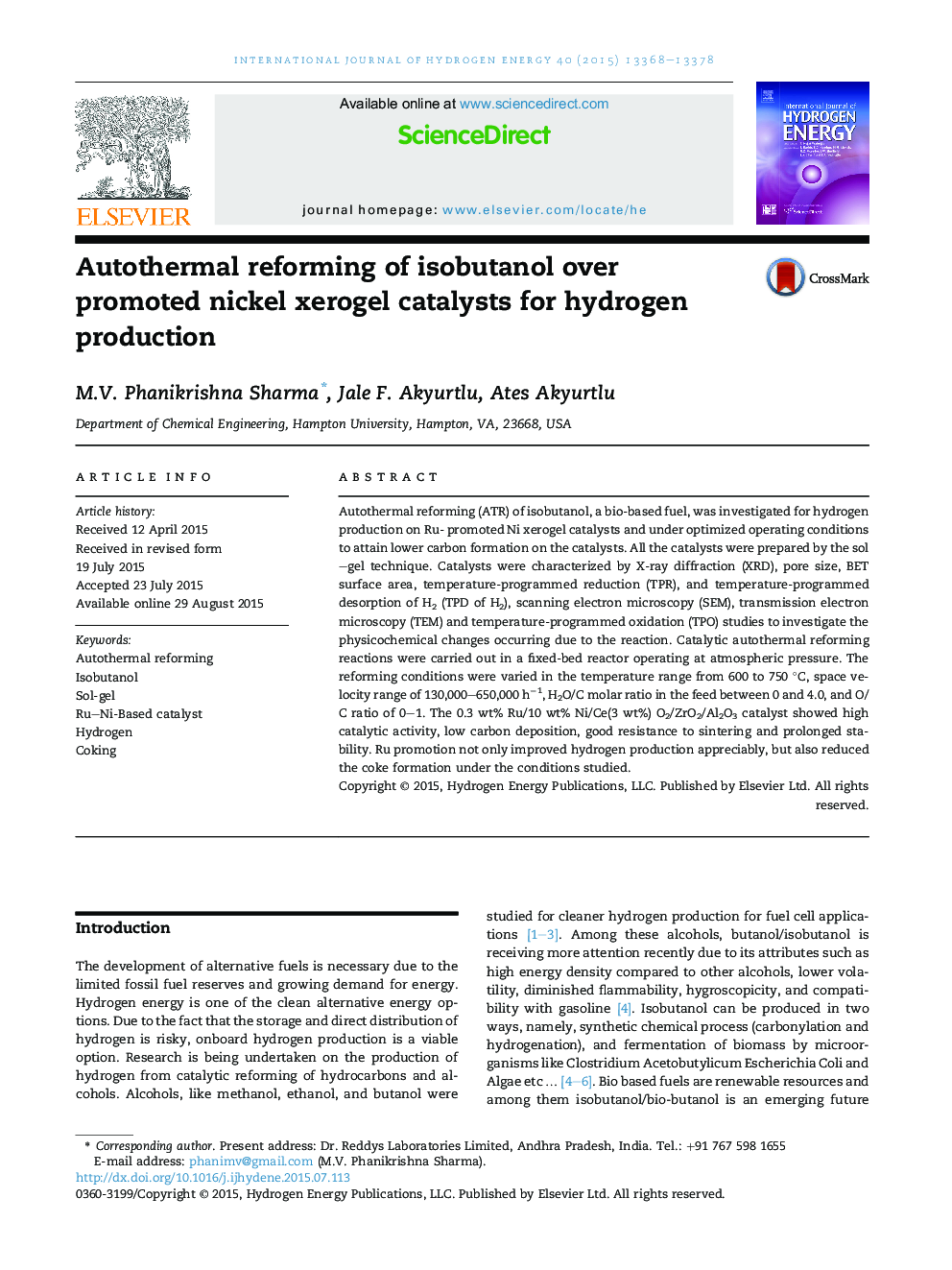| Article ID | Journal | Published Year | Pages | File Type |
|---|---|---|---|---|
| 1274630 | International Journal of Hydrogen Energy | 2015 | 11 Pages |
•Ru promoted Ni-based Sol–Gel catalysts developed for autothermal reforming of isobutnol – a bio based fuel.•0.3 wt%Ru/10wt% Ni/3 wt%Ce/Zr/Al2O3 catalyst has high stability and high hydrogen production.•Ru promoted Ni-based catalysts suppressed coke formation over a period of 25 h run with no compromise in catalyst activity.
Autothermal reforming (ATR) of isobutanol, a bio-based fuel, was investigated for hydrogen production on Ru- promoted Ni xerogel catalysts and under optimized operating conditions to attain lower carbon formation on the catalysts. All the catalysts were prepared by the sol–gel technique. Catalysts were characterized by X-ray diffraction (XRD), pore size, BET surface area, temperature-programmed reduction (TPR), and temperature-programmed desorption of H2 (TPD of H2), scanning electron microscopy (SEM), transmission electron microscopy (TEM) and temperature-programmed oxidation (TPO) studies to investigate the physicochemical changes occurring due to the reaction. Catalytic autothermal reforming reactions were carried out in a fixed-bed reactor operating at atmospheric pressure. The reforming conditions were varied in the temperature range from 600 to 750 °C, space velocity range of 130,000–650,000 h−1, H2O/C molar ratio in the feed between 0 and 4.0, and O/C ratio of 0–1. The 0.3 wt% Ru/10 wt% Ni/Ce(3 wt%) O2/ZrO2/Al2O3 catalyst showed high catalytic activity, low carbon deposition, good resistance to sintering and prolonged stability. Ru promotion not only improved hydrogen production appreciably, but also reduced the coke formation under the conditions studied.
Graphical abstractExtent of reforming and product yields during the autothermal reforming of isobutanol. (Catalyst reduction at 600 °C for 2 h; reaction conditions: temp: 650 °C; SV: 217,000 h−1; H2O/C: 2.0; O/C: 0.35).Figure optionsDownload full-size imageDownload as PowerPoint slide
